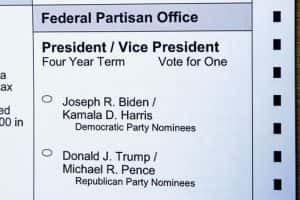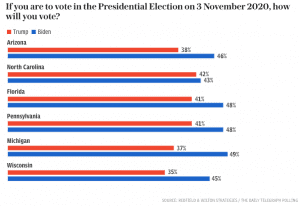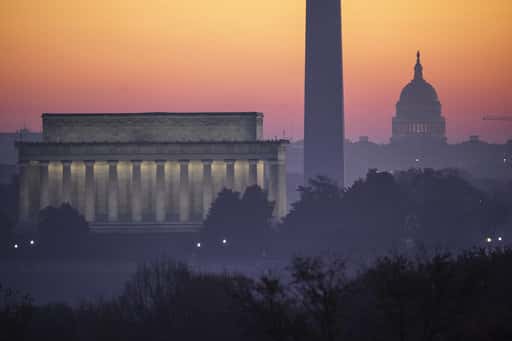Search ‘US Election 2020’ to view all our coverage
In the run-up to Tuesday’s US Presidential election our student reporting team aims to explore, explain, enlighten and even entertain you on the race for the White House.
EVERY four years people across the US vote for who they want to be their president, and the next election is on Tuesday.
The presidential debates have come to an end, and the final days of campaigning are in sight.
Sam Boal gets to grips with how it all works…

What date is the 2020 US election?
The election will be held on Tuesday, November 3. However, Donald Trump has already threatened to delay the outcome in a tweet which suggested that new rules making it easier for voters to use postal ballots in many states could lead to what he calls a ‘rigged election’.
There is NO WAY (ZERO!) that Mail-In Ballots will be anything less than substantially fraudulent. Mail boxes will be robbed, ballots will be forged & even illegally printed out & fraudulently signed. The Governor of California is sending Ballots to millions of people, anyone…..
— Donald J. Trump (@realDonaldTrump) May 26, 2020
How is the president chosen?
Firstly, Republicans and Democrats – America’s two main political parties – must pick one candidate to run for president on their behalf. This year, sitting President Donald Trump is representing the Republican party (nicknamed the ‘Grand Old Party’) for the second time, and Joe Biden is running on behalf of the Democratic party.
A third party candidate may occasionally enter the race – like Kanye West did this year – but it is very rare for them to make a significant impact.
Each candidate is chosen after each party holds primaries or caucuses in each American state (basically, preliminary voting rounds to confirm the most popular candidate), which are held from January until around June.
Primary Elections
During primary elections, the public vote for people called ‘delegates’ – these are people who are supporting a particular person they want to run for president.
The number of delegates vary in each state, depending on how many people live there. If a candidate wins a state, they then get all of that state’s delegates.
The person from each party with the most delegates then becomes their candidate, and therefore runs for the job of president.
Caucuses
Some states do not hold primaries, and instead use a caucus. This is a local meeting system, in which local members of a political party register their preference among candidates running for office, or select delegates to attend a convention.

The election itself
Each presidential election is always held on the first Tuesday in November.
Americans vote people who are called ‘electors’ in their state, who are supporting the candidate they want to become president – this process is called the electoral college.
The more people who live in a state, the more electors a state has. For example, California, which has an extremely high population, has 55 votes. On the other hand, Delaware, which has a far smaller population, has just three votes.
In total, there are 538 votes across the 50 states and the capital, Washington DC.
The candidate who has received the most electors wins all the state’s electoral college votes.
The first candidate to win enough states to get to 270 electoral votes is elected as president.
The electoral college system usually reflects the popular vote. There have been just five times in US history where the president has not received the most votes – with the most recent instance being in the last election in 2016. Donald Trump won the electoral college, but Hillary Clinton, his Democratic opponent, won the popular vote.
What are swing states?
To win the presidential election, the key is for the parties to target their campaigning at specific battleground or swing states.
There are several swing states which – as the term implies – have gone both ways in recent elections. Winning their votes is the key to winning the election.
This year North Carolina, Michigan, Wisconsin, Florida and Arizona could all be decisive in the election’s outcome.

What happens on Election Day?
On Tuesday, November 3, the millions of Americans who haven’t sent a mail-in ballot will head to the polling stations.
Most polls open at 6am and the latest they stay open is 9pm (2am UK time on November 4).
The counting of votes begins later that day.
When will the winner take office?
The date on which a new president is sworn in is enshrined in the US constitution. Either Trump or Biden will be inaugurated on January 20, 2021.
Who can be president?
The President of America can be any gender, race or religion, but there are just three essential factors that they must have. These include:
- They must have been born in the US.
- They must be at least 35 years old.
- They must have lived in the US for at least 14 years prior to running for president.
It can take years of extremely hard work to be elected president, and a lot of money – usually millions of dollars – is needed in order to support a campaign.
Once a president has been elected, they can only be in the job for a maximum of eight years (two four-year terms of office).



